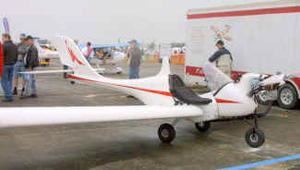Border securityDHS seeks better ways to detect ultra light aircrafts used by smugglers
As the war on drugs continues with every sunrise and sunset, DHS has awarded a contract just short of $100 million for a specialized system which will be able to detect ultralight aircrafts which are used to smuggle drugs across the border

The small profile of ultralight aircraft makes them difficult to detect // Source: reaa.ru
As the war on drugs continues with every sunrise and sunset, the Department of Homeland Security (DHS) has awarded a contract just short of $100 million for a specialized system which will be able to detect ultralight aircrafts which are used to smuggle drugs across the border.
Customs and Border Protection (CBP) started thinking about such technology more than two years ago. Drug cartels now use slow moving aircrafts that fly at low altitudes, making it hard for radars to detect, in order to transport drugs. The agency has called this “an immediate, high-priority threat” and asked contractors for an existing sensor technology that could enable authorities to identify and monitor low-profile aircraft attempting to smuggle drugs into the United States.
Federal Aviation regulators classify ultralight aircrafts as any aircraft with one seat, weighing up to 254 pounds, and carrying five gallons of fuel.
California Watch reports that last week DHS awarded SRCTec Inc. a $99.9 million dollar contract to produce the system. Officials want the system to be able to track as many as twenty-five “items of interest” at any time and to be capable for deployment in remote areas.
This grant is part of the Secure Border Initiative (SBI) which was launched during the Bush administration and has continued through the Obama administration to use twenty-first-century technology to help officers more readily to identify border crossers and expand the area they could patrol more effectively.
Two years ago SBI suffered major setback when a planned “virtual fence” of radars, sensors, and surveillance cameras did not meet expectations. The lead contractor, Boeing, received hundreds of millions of dollars from the program before DHS secretary Janet Napolitano concluded that the fence known as SBInet was hopelessly hobbles by shoddy technology, cost overruns, and missed and delayed deadlines.
The name of the program was dropped but the government continued to fund border surveillance technology, despite years of costly spending that saw little or no success dating back to the Clinton administration.
Authorities have made up for the lack of success with SBInet by using pricey drones that cost between $18 and $20 million each and by using thermal imaging devices in truck beds that help Border Patrol officers track smugglers and illegal crossers at night.
Lawmakers and the president earlier this year approved the last piece of legislation introduced by Representative Gabrielle Giffords (D-Arizona)., which targeted ultralights, before she was seriously injured in a mass shooting in Tucson in 2011. The Ultralight Aircraft Smuggling Prevention Act of 2012 seeks to close a legal loophole by stiffening penalties for smugglers who use the aircraft for drug trafficking.
